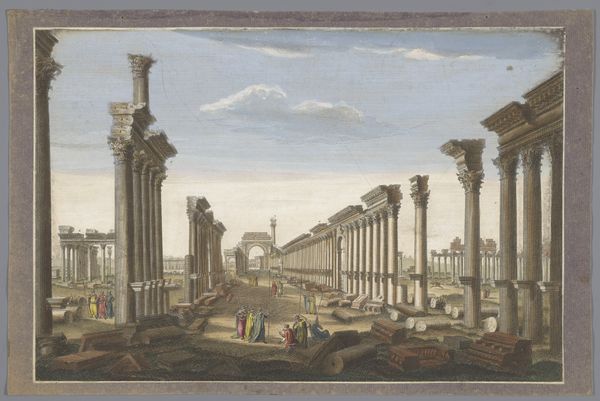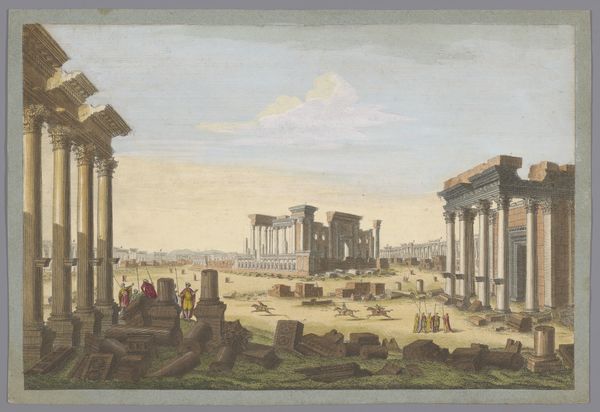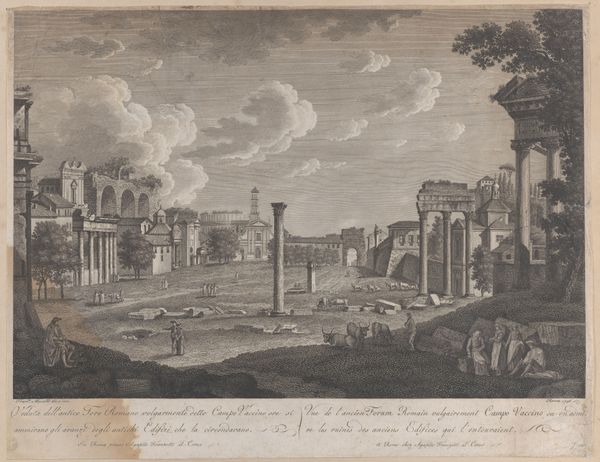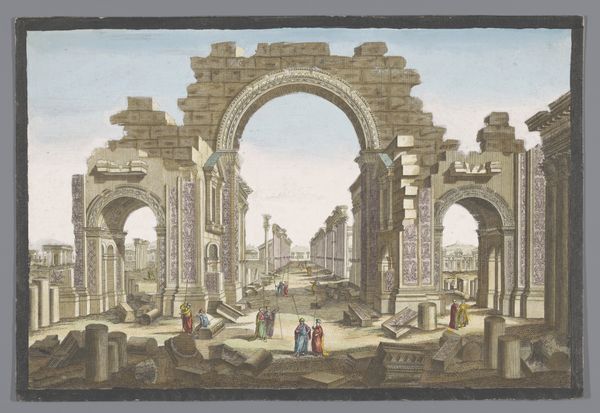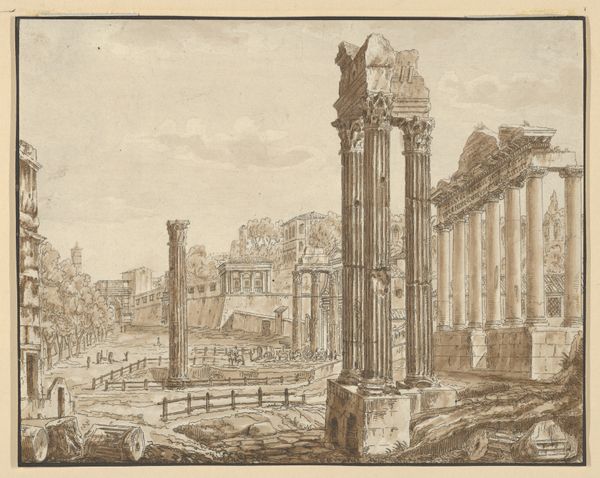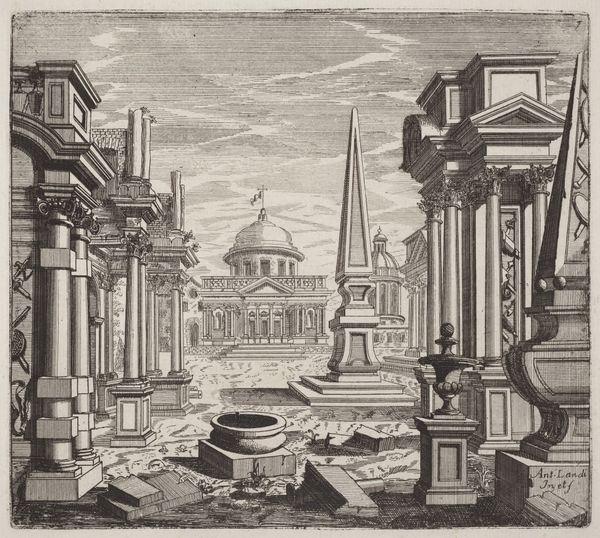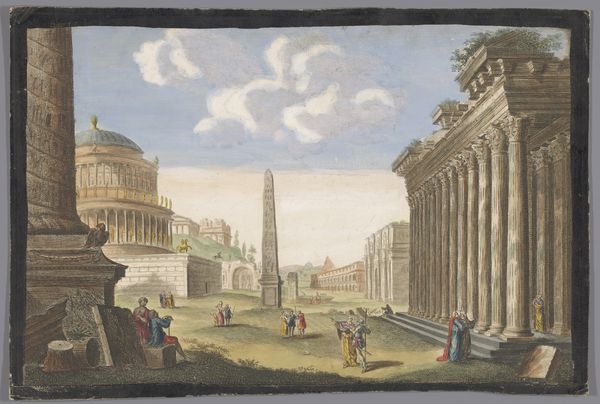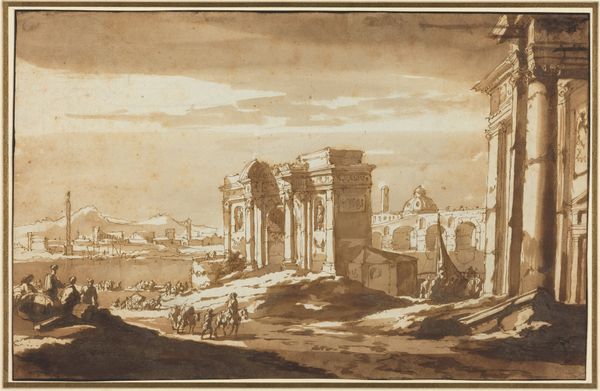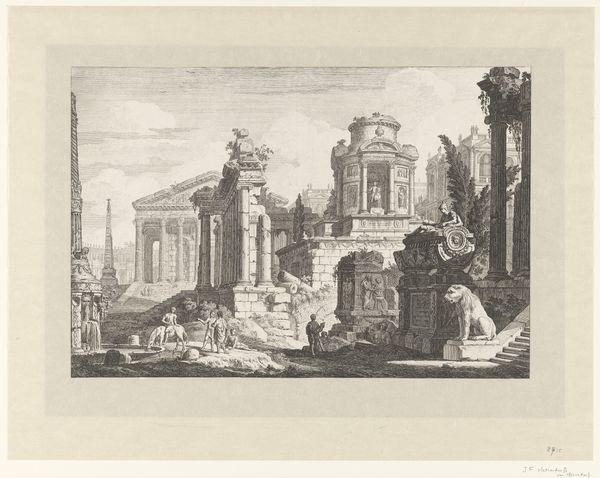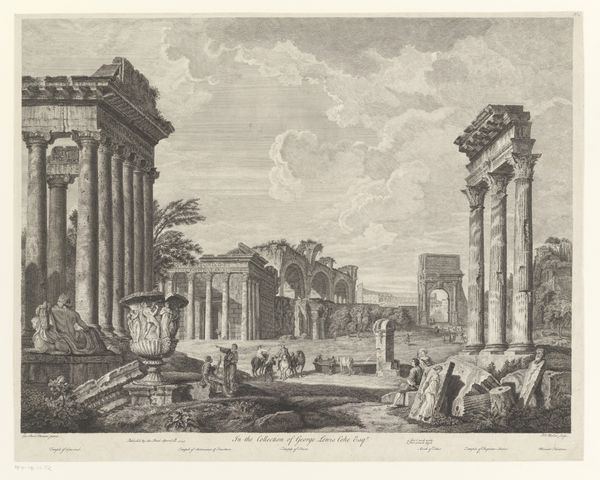
Gezicht op de ruïne van de boog van de zuilengalerij te Palmyra, gezien vanaf de westzijde 1745 - 1775
0:00
0:00
etching, watercolor
#
etching
#
landscape
#
perspective
#
watercolor
#
coloured pencil
#
classicism
#
ancient-mediterranean
#
cityscape
#
history-painting
#
watercolor
Dimensions: height 266 mm, width 397 mm
Copyright: Rijks Museum: Open Domain
Editor: Here we have "View of the Ruins of the Arch of the Colonnade in Palmyra, Seen from the West Side," created between 1745 and 1775 by Jean-François Daumont. It's an etching with watercolor, and what immediately strikes me is the contrast between the grandeur of the architecture and its dilapidated state. What can you tell me about this piece? Curator: Notice how Daumont depicts the ruins. It isn't just a rendering of a pretty picture. Consider the materiality of this work; an etching with watercolor implies a mass-produced print, further colored, possibly by workshop assistants. The etching process itself democratized the image, moving away from unique, handcrafted depictions towards more readily available copies of these once-exclusive views. What does this say about how Palmyra, even in ruin, was consumed as a commodity by the European public? Editor: So you’re saying it’s less about the artistic vision and more about how the image was produced and disseminated? I hadn't considered that. Curator: Exactly. Think about the labor involved. An etching is created through repetitive, physical actions, biting away at the metal. Watercolor tints are added assembly-line fashion. This brings to the fore a collective enterprise. How does that impact your reading of the figures within the ruin itself? Are they tourists, or perhaps something else entirely? Editor: Now that you mention the labor involved in its production, I wonder, were such images a form of visual consumption, mirroring the colonial enterprises of the time? Curator: Precisely! This image participates in a system. It converts distant realities into portable, consumable artifacts. Who is the 'gaze' for which it was manufactured? Is it tied to social, economic and power dynamics? Editor: I see what you mean. It's not just a historical landscape. It's a product of a particular time and place, reflecting very specific production and distribution methods and serving the interests of a specific kind of viewer. Thanks, I never would have seen that without your perspective. Curator: Indeed. Considering the material processes offers insight into how we relate to even the most seemingly straightforward images.
Comments
No comments
Be the first to comment and join the conversation on the ultimate creative platform.
